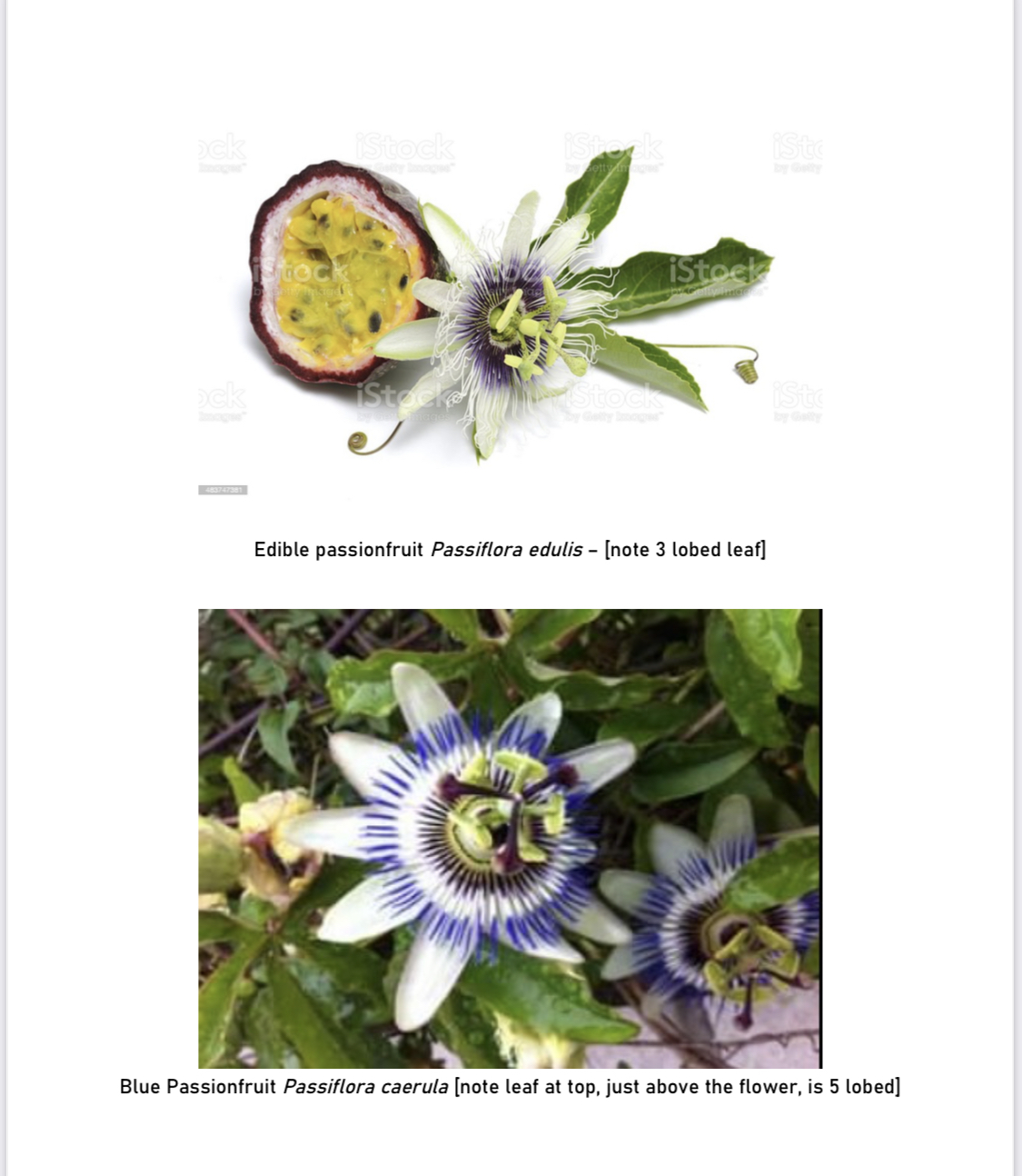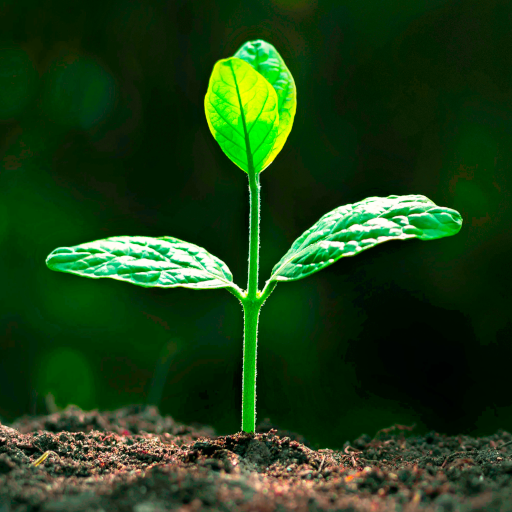By Pete Menlo
Grafted passionfruit is the norm in southern, more temperate climates because of disease problems, but that is less of a problem in the subtropics, where it is best to grow from seed.
The stock used for grafting is usually a wild passionfruit, also sometimes known as Blue Passionfruit (I think that is because the leaves have a slight bluish tinge to them).
If the passionfruit grows from below the graft, it can be very prolific and cause the death of the desired vine from above the graft. You can usually tell before even looking at the graft area, as the leaves have that darker colour, and don’t have the glossy shine/sheen of the desired passionfruit leaves. If it has killed the actual passionfruit you wanted, dig it out as soon as you can. Usually, it’s once the wild passionfruit predominates, and a lot of energy is being sent down to the roots that the roots spread, and suckers become a weedy problem.
This wild passionfruit often doesn’t have fruit, or the fruit is not particularly nice. Another thing about wild passionfruit is it contains cyanide forming compounds in the leaves and stems, which actually convert to cyanide when ingested, so good to not to let little kids near and possibly may be similarly dangerous to browsing goats or cattle, although I understand that the leaves are quite bitter, which may be a deterrent.
If, after cutting back the overgrowth from below the graft and the above graft vine is still alive, you will need to keep an eye on any below graft shoots and remove them, and keep an eye on suckers, they are named as weeds in some parts of NSW. In NSW this has become a particular problem with a grafted passionfruit known as Nellie Kelly, a popular grafted passionfruit in which the Blue passionfruit is commonly used as the rootstock.


